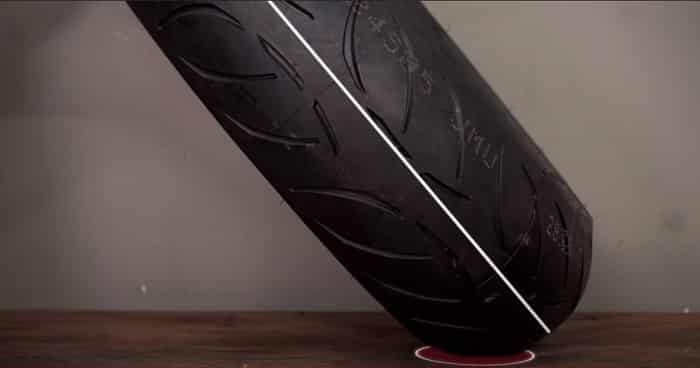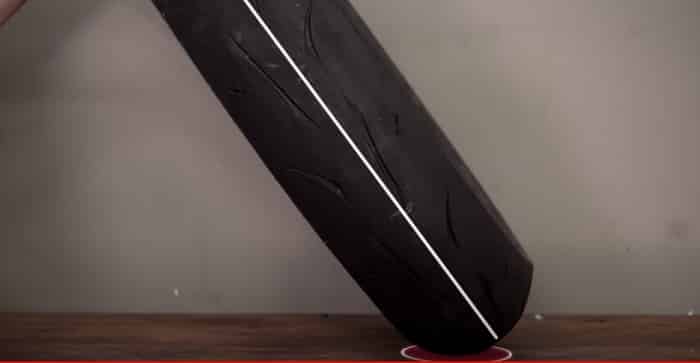Deprecated: mb_convert_encoding(): Handling HTML entities via mbstring is deprecated; use htmlspecialchars, htmlentities, or mb_encode_numericentity/mb_decode_numericentity instead in /home/u598013642/domains/motorcyclegear101.com/public_html/wp-content/themes/acabado/functions.php on line 2160
Deprecated: mb_convert_encoding(): Handling HTML entities via mbstring is deprecated; use htmlspecialchars, htmlentities, or mb_encode_numericentity/mb_decode_numericentity instead in /home/u598013642/domains/motorcyclegear101.com/public_html/wp-content/themes/acabado/functions.php on line 2160
Deprecated: mb_convert_encoding(): Handling HTML entities via mbstring is deprecated; use htmlspecialchars, htmlentities, or mb_encode_numericentity/mb_decode_numericentity instead in /home/u598013642/domains/motorcyclegear101.com/public_html/wp-content/themes/acabado/functions.php on line 2160
Deprecated: mb_convert_encoding(): Handling HTML entities via mbstring is deprecated; use htmlspecialchars, htmlentities, or mb_encode_numericentity/mb_decode_numericentity instead in /home/u598013642/domains/motorcyclegear101.com/public_html/wp-content/themes/acabado/functions.php on line 2160
Deprecated: mb_convert_encoding(): Handling HTML entities via mbstring is deprecated; use htmlspecialchars, htmlentities, or mb_encode_numericentity/mb_decode_numericentity instead in /home/u598013642/domains/motorcyclegear101.com/public_html/wp-content/themes/acabado/functions.php on line 2160
Deprecated: mb_convert_encoding(): Handling HTML entities via mbstring is deprecated; use htmlspecialchars, htmlentities, or mb_encode_numericentity/mb_decode_numericentity instead in /home/u598013642/domains/motorcyclegear101.com/public_html/wp-content/themes/acabado/functions.php on line 2160
Deprecated: mb_convert_encoding(): Handling HTML entities via mbstring is deprecated; use htmlspecialchars, htmlentities, or mb_encode_numericentity/mb_decode_numericentity instead in /home/u598013642/domains/motorcyclegear101.com/public_html/wp-content/themes/acabado/functions.php on line 2160
Today we’re looking at how to choose the size, the speed, the load, and the construction of the tire for your bike. We will also look at what specifications you should be looking for.
The answer to this question is simple, follow your owner’s manual. When you bought the bike, you should have got an owner’s manual.
Questions Answered In This Article
- What Size Tire Will Fit My Motorcycle Rim?
- Can I Put A Wider Tire On My Motorcycle Rim
- What Does a Spec Mean on Motorcycle Tires?
- What does Load and Speed Rating Mean on Motorcycle Tires?
If you didn’t, it will be available online somewhere, and in the manual, it’s, going to tell you what construction of the tire, what size of the tire, what speed rating, and what load capacity you need! You should follow those recommendations.
You paid a lot for that clever engineering that went into your bike, and if you’re not putting the same tire that the manufacturer specifies on there, you’re not getting the most out of it. So you might as well follow their recommendations.
We would never presume to tell you what you should do with your bike. It’s your motorcycle, and you can put whatever tire you please, but with that, we will give you just a few cautions if you’re going to deviate from the manufacturer’s guidelines.
What Size Tire Will Fit My Motorcycle Rim?
The thing to note with your motorcycle tire’s size is that many people look at their bike, and they’ll think! Well! You know I could put a wider tire on there; that would look cool. I got a lot of space between the forks, and I can probably get away with it.
You need to note that whatever tire you can fit on your bike in the garage might not fit out on the road.
That’s because as the tire is rotating as it’s leaning into corners, as it’s taking weight, it’s going to be changing shape quite a bit.
So just because the tire fits on your bike in the garage, when you get out there on the road and start riding, it could start contacting the fender, and that’s going to cause some problems for you.
What does Load and Speed Rating Mean on Motorcycle Tires?
Tires are a pretty unglamorous part of your motorcycle but are very important. There’s some important information written on your tire sidewalls, like the load and speed rating, if you know how to read it.
The speed rating, which is a single letter, corresponds to the maximum speed the tire can go while supporting that maximum weight. Because the load information is so important to safety, it’s going to be spelled out elsewhere on the tire sidewall.
Again, we recommend that you follow the manufacturer’s guidelines. Still, if you aren’t, we recommend going a few steps above. If you have a speed rating recommended for your motorcycle and want to get one up or two up from there, that’s not going to be a problem.
Same with load capacity, if you want to do one or two better than the manufacturer recommends, again, that’s not going to be a problem. It’s not going to kill anybody.
You will probably notice that you will probably sacrifice a bit of riding comfort where you didn’t have to. You may add a little bit of extra rolling resistance, that’s unnecessary, but again those aren’t big deals.
The thing to note is that you can’t go below when the manufacturer recommends.
So if they state a speed rating and you buy a tire with less speed rating than that, it’s not a good idea. It’s potentially dangerous. Of course, this goes for load capacity.
Tire Construction
As we mentioned earlier, you got your radial tires, your bias-ply tires, your bias-belted tires.
These are all construction types, and if you deviate from what the manufacturer recommends you to put on your bike, you’re going to notice a couple of things will be changing.
Mainly, the handling of the bike is going to change. It’s going to become a bit unwieldy; it might become a bit softer, a little bit tighter in the turns, that’s going to feel weird because the motorcycle wasn’t meant to be used with a tire like that.
You may also note things like how your tire heats up and dissipates heat may change if you deviate from what the manufacturer recommends for the construction of your tire.
Getting an unwieldy, dynamic motorcycle with the tires is especially common if you decide to mate tires. That is putting a bias on the front and radial on the rear, or a Pirelli on the front and a Michelin on the rear.
That will cause things to go a little bit unwieldy, just a little bit awkward to drive for the same reason, as it would be if you wore two different shoes and walked around the whole day.
You probably become a bit misaligned; your back would feel a little bit whacked out.
That’s because you’re on unequal footing; the same goes for your motorcycle. If it’s on unequal footing, it may not behave exactly as it’s supposed to.
Of course, the grand exception of this is that some manufacturers will spec mated tires. They will have some bias on the front and some radial on the rear right out of the factory.
Of course, if the manufacturer recommends what you should do, you should follow their guidelines.
The bottom line is that you should follow what your manual recommends, and if you’re not going to, be aware.
Take these cautions that we’ve mentioned and take it easy on the first few rides because you’re not sure how any specific tire will react on your specific bike.
Can I Put A Wider Tire On My Motorcycle Rim?
There is one more factor that comes into play when selecting tire size, and that is style. People love the look of a big fat rear tire, and they might even assume that it’s going to give them more grip.
Putting a wider tire on your motorcycle rim is not recommended by the manufacturers because if you squeeze a wide tire onto a narrow rim, it might pinch the profile so much, you end up with a smaller contact patch. The smaller the contact patch the less grip you have, it will also affect the braking and handling performance.
What is tire width? Why do some bikes, as the Z650 come with skinny little tires, while other bikes, like the R1, have big old fatty tires? And if you want to put a wider tire on the back of your bike, how’s it going to affect handling?
Alright, so most of you will think this tire size question is dumb because the answer seems obvious:
Bigger, more powerful sport bikes need bigger tires because bigger tires give you more grip.
Bigger tires equal more grip; therefore, bigger must be better, right? Not necessarily.
Is it that a wider tire fitted to appropriately sized rims will give you more grips because it has a larger footprint.
But, if there’s one thing to remember when it comes to tire performance, it is always a compromise.
Wider tires might give you more grip, but really wide tires, like those you might see on some cruisers or bikes like Hayabusas, are not necessarily good for handling.
For starters, your bikes will not tip into corners as easily, and it’s going to require more bar input to stay online.
Wider tires are also heavier, so acceleration and braking performance are going to suffer, and that extra mass makes your suspension job harder since there’s more unsprung weight to control.
On the other hand, skinnier, lighter tires are good for handling, but they can’t cope with as much horsepower, and if you were to put a skinny tire on a big, powerful bike, it’s, going to wear out quickly.
So smaller, less powerful motorcycles can get away with skinnier, lighter tires, while bigger, more powerful motorcycles need a wider tire so that they offer adequate grip and wear.
Then there are all those other handling compromises that I also covered. Unless you were a track-day rider or a racer, and you’re looking for that last little bit of grip from one size larger tire, your best bet is to stick with your stock tire sizes.
If you’re wondering what size tire your bike is supposed to be rolling on, you can check your owner’s manual.
You can look at the sticker that’s going to be on the frame or the swing arm, or you can look right at the wheel because the width will be printed right there.
Take that rim width and match it to the recommendations from your tire manufacturer of choice.
So far, we’ve just talked about grip and some really basic handling characteristics, but there’s a whole lot more to tire dynamics, a whole lot more.
I want to bring up mostly because I think it’s interesting is how tire width influences how much of the lean angle can be carried through a corner.
All right. We’re going to get a little bit of science here. If you envision a motorcycle following a corner’s arc, the centrifugal force pushes the bike to the outside.
The turn is in equilibrium, with the lateral acceleration created by the bike leaning into the turn.
When you’re cornering on a wide tired bike, the tire’s contact patch is farther away from the centerline of the motorcycle, so the bike has to lean over farther to achieve the necessary equilibrium.

With narrower motorcycle tires, the contact patch is closer to the bike’s centerline, so a less lean angle is needed to balance those two opposing forces.

Tire width is one reason why wide-tired MotoGP bikes lean over as far as they do, while narrow-tired Moto 3 bikes don’t lean over nearly as much.
What Does a Spec Mean on Motorcycle Tires?
There is a lot of data spec on a tire sidewall there. Some of it is important, some of it is not so critical, and all of it is difficult to understand. If you know how to read it, the most obvious and important piece of information you’re going to see is the tire size.
The first number you’re going to see is the width listed in millimeters. After that, you have the aspect ratio which represents the height of the tire as a percentage of its width. A tire that has 180/55 written on the sidewall is 180 millimeters wide and the height is 55 millimeters as a percent of 180, which works out to about 99 millimeters.
The rule when it comes to aspect ratios, a shorter sidewall is going to yield more grip and better handling, since it makes for a larger, stiffer contact patch.
All right. So that just about wraps up that – and I know that we just scratched the surface on a complex topic.
I also know that this topic was a little out of the normal wheelhouse, but hopefully, you enjoyed it, and hopefully, you learned something.
Related Articles
- 2 Reasons Why A Motorcycle’s Rear Tire Wear on One Side?
 Tires and tire pressure are like oil; everybody has an opinion and will fight to defend it. So why does the outside of the rear tire wear down on the side?
Tires and tire pressure are like oil; everybody has an opinion and will fight to defend it. So why does the outside of the rear tire wear down on the side? - Should You Replace Motorcycle Tires In Pairs? (Mythe Busted)
 Motorcycle tires are among the topics and discussions usually reserved for politics and religion. That makes sense because you have to think about replacing tires from time to time, but
Motorcycle tires are among the topics and discussions usually reserved for politics and religion. That makes sense because you have to think about replacing tires from time to time, but - 3 Reasons Why Motorcycle Tires so Expensive
 A common question that we get from first-time motorcycle buyers is why a motorcycle tire is so expensive? Three main components contribute to the higher tire price compared to a
A common question that we get from first-time motorcycle buyers is why a motorcycle tire is so expensive? Three main components contribute to the higher tire price compared to a - What Size Motorcycle Tire Do I Need & Why
 Today we’re looking at how to choose the size, the speed, the load, and the construction of the tire for your bike. We will also look at what specifications you
Today we’re looking at how to choose the size, the speed, the load, and the construction of the tire for your bike. We will also look at what specifications you - When To Change Motorcycle Tires – Myth vs. Fact
 How do you know when to change motorcycle tires? Stick around we’re gonna go over some of the telltale signs that your tires are worn out with our detailed video guide on when to change motorcycle tires.
How do you know when to change motorcycle tires? Stick around we’re gonna go over some of the telltale signs that your tires are worn out with our detailed video guide on when to change motorcycle tires.
Previous Article: Should You Replace Motorcycle Tires In Pairs?
Next Article: When To Change Motorcycle Tires

